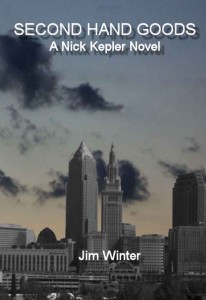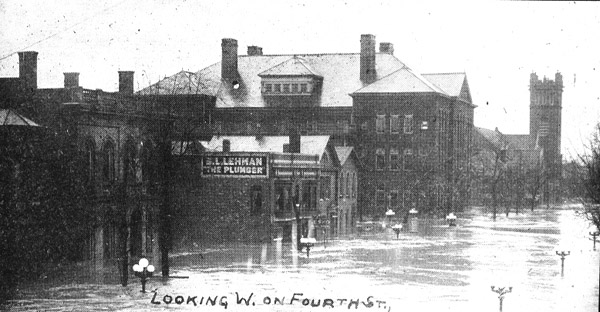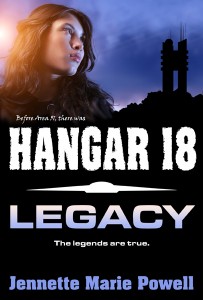There’s no shortage of blog posts and articles on writers’ block at any time, but there seem to be a lot of them now, with the new year. I’m one of those who doesn’t believe in writers’ block as a thing in and of itself, but I experienced a bit of block myself this week, when it came time to do the assignment for the writing workshop I’m currently taking.
Last week’s assignment I pretty much put off to the last minute, and wound up dashing off something I didn’t really find interesting, that I suspected wasn’t very good. The instructor called me on it (though nicely), which I totally expected.
This week’s assignment was a challenging one, and I put it off too.
I was blocked on it, and when I took a minute to think about it, I realized it was because I didn’t want to throw out more crap and get called on it again. But what that really was, was good old fear.
I believe that’s what’s behind most of what we call writers’ block. Fear of not being good enough. Fear of getting bad reviews, if we publish. Fear of rejection, if we’re sending materials to agents or publishing houses. Fear of… I don’t know. It’s kind of irrational when I think about it. As this very instructor has said in other workshops, what is there really to fear? It’s not like an agent, editor, or reader is going to hunt us down and shoot us for writing something not so good. If we send something to an editor or agent and it’s no good, it’s not like they’ll remember it–or the writer. Or if we self-publish, neither will readers, if they read it at all. And I have zero illusions that the instructor for my workshop remembers anything that students send in for these short, 200-400 word assignments. That’s just silly.
This week’s assignment was to write about someone in a blizzard. It helped that we had our first, real snow of the winter last night (one that’s pretty but didn’t stick to the roads, my favorite kind!). That led me to think of some cool Ohio history–something that interests me–so I wrote about a girl in the Blizzard of 1950 and sent it off. And yes, once I got going, it was fun to write, getting all those historical details in without coming out and writing a dateline. Here’s hoping that will show through for the instructor, because I’d like to think I’m learning something in that workshop. 🙂
What I’ve been reading: Still working on the same novel as last week, so I’ll discuss after I finish.
 ROW80 Update: Here are last week’s goals, and how I did.
ROW80 Update: Here are last week’s goals, and how I did.
- Finish two more scenes on the novella – Done
- Complete last week’s assignment for the workshop- Done
- Watch the workshop lesson videos for next week – Done
- BONUS: Start the following scene in the novella – Done
Yes, really! I met all of them, even the bonus. It helped that I finally kicked the last of the crud last weekend, and have been feeling better this week (two weeks is an improvement over last time I got this sick, so my supplements must be helping :)).
So this week’s goals are:
- Finish the next scene in the novella
- Watch the workshop lesson videos for next week
- BONUS: Start the following scene in the novella.
These look less than last week, but I expect the scene to be a long one, and I have plans all day Saturday, so taking that into consideration. Luckily, it’s the last week for the workshop, so no assignment.
What about you–have you had to fight through fear lately, whether writing or something else? Did the fear turn out to be something silly, and what did you do? How are you doing with whatever goals you have so far this new year, whether writing or otherwise? Please share in the comments–I’d love to hear from you!
 Jennette Marie Powell writes stories about ordinary people in ordinary places, who do extraordinary things and learn that those ordinary places are anything but. In her Saturn Society novels, unwilling time travelers do what they must to make things right... and change more than they expect. You can find her books at Amazon, Barnes & Noble, Smashwords, Kobo, iTunes, and more.
Jennette Marie Powell writes stories about ordinary people in ordinary places, who do extraordinary things and learn that those ordinary places are anything but. In her Saturn Society novels, unwilling time travelers do what they must to make things right... and change more than they expect. You can find her books at Amazon, Barnes & Noble, Smashwords, Kobo, iTunes, and more.


 The weather here in Ohio has been crazy the past couple of weeks! Around zero a week ago, up in the fifties yesterday morning, and almost that today, only to drop back to a more typical twenty-something later this week. Luckily, the folks at Mythical Press have been busy getting something ready that should warm up even the coolest soul, if only figuratively: Love’s a Beach, an anthology of stories of summer love by members of the Ohio Valley Romance Writers of America.
The weather here in Ohio has been crazy the past couple of weeks! Around zero a week ago, up in the fifties yesterday morning, and almost that today, only to drop back to a more typical twenty-something later this week. Luckily, the folks at Mythical Press have been busy getting something ready that should warm up even the coolest soul, if only figuratively: Love’s a Beach, an anthology of stories of summer love by members of the Ohio Valley Romance Writers of America.













 The building was originally built as part of an industrial complex in the mid-1800s by Eugene Barney, one of Dayton’s captains of industry in the streetcar manufacturing business. The neighborhood was powered by DC electric – a major innovation at the time! Over the years, many food distributors and grocers occupied the building, hence its name.
The building was originally built as part of an industrial complex in the mid-1800s by Eugene Barney, one of Dayton’s captains of industry in the streetcar manufacturing business. The neighborhood was powered by DC electric – a major innovation at the time! Over the years, many food distributors and grocers occupied the building, hence its name.






 U.S. Air Force research psychologist Adam Keller is an empath, accustomed to sensing the thoughts and emotions of others. Because of his gift, he keeps people at a distance. When a disembodied presence full of anger and fear invades his mind and demands rescue, dark thoughts of death threaten to overwhelm Adam. Then he meets a woman whose attraction to him quiets the voice. All he has to do to keep his sanity is risk his heart and experience the emotions he’s long denied himself.
U.S. Air Force research psychologist Adam Keller is an empath, accustomed to sensing the thoughts and emotions of others. Because of his gift, he keeps people at a distance. When a disembodied presence full of anger and fear invades his mind and demands rescue, dark thoughts of death threaten to overwhelm Adam. Then he meets a woman whose attraction to him quiets the voice. All he has to do to keep his sanity is risk his heart and experience the emotions he’s long denied himself.